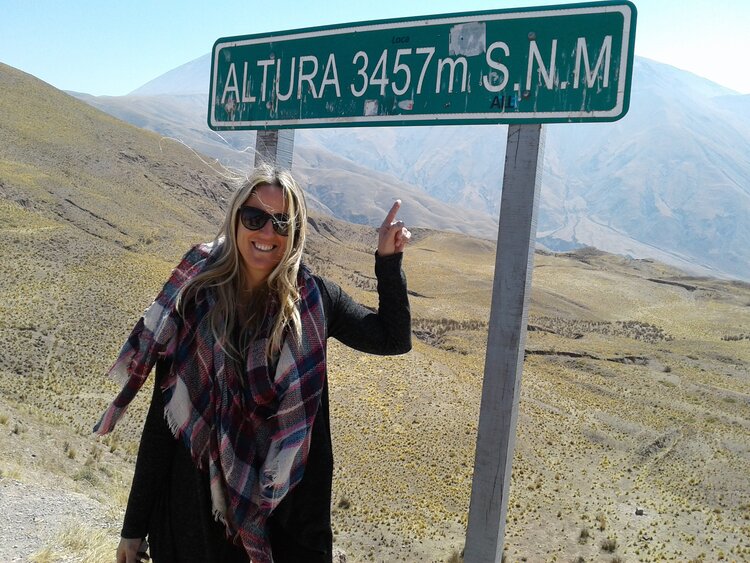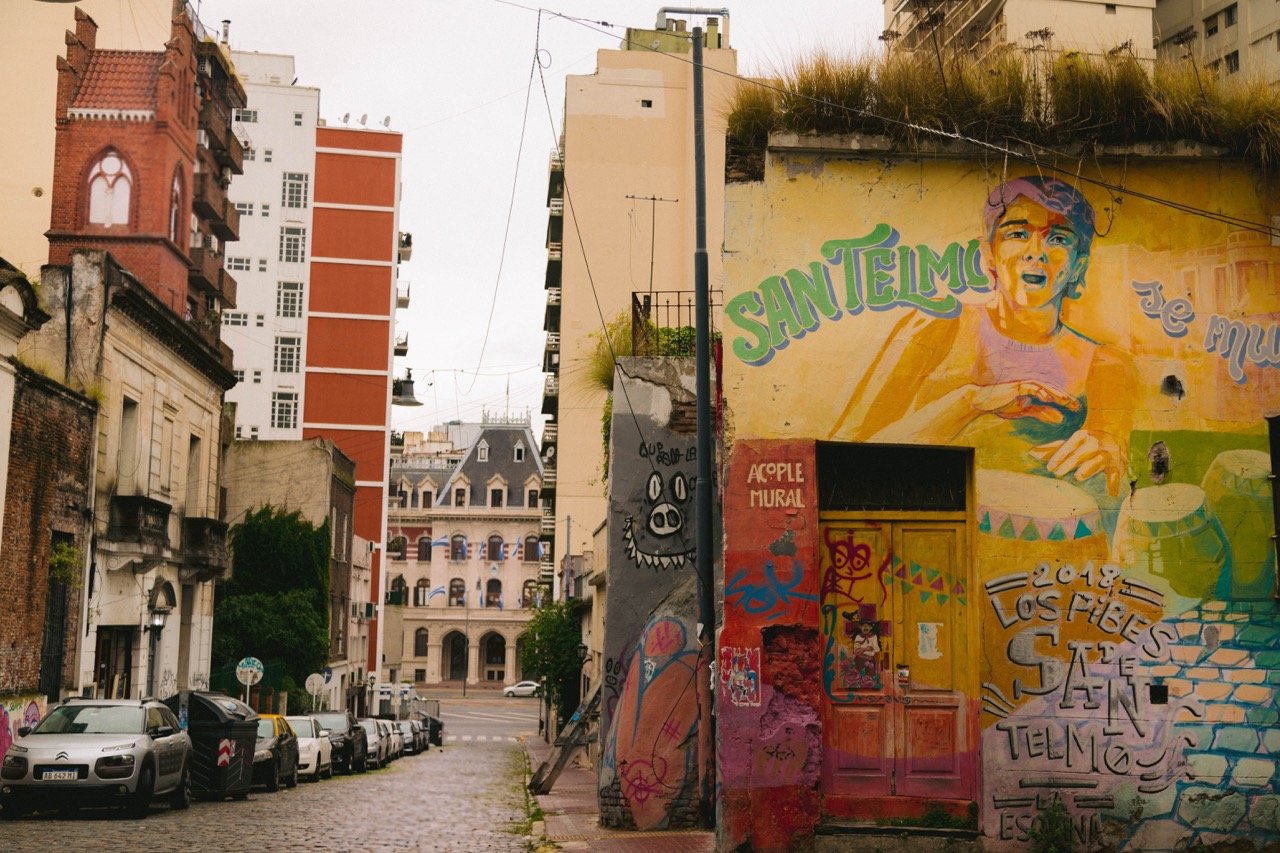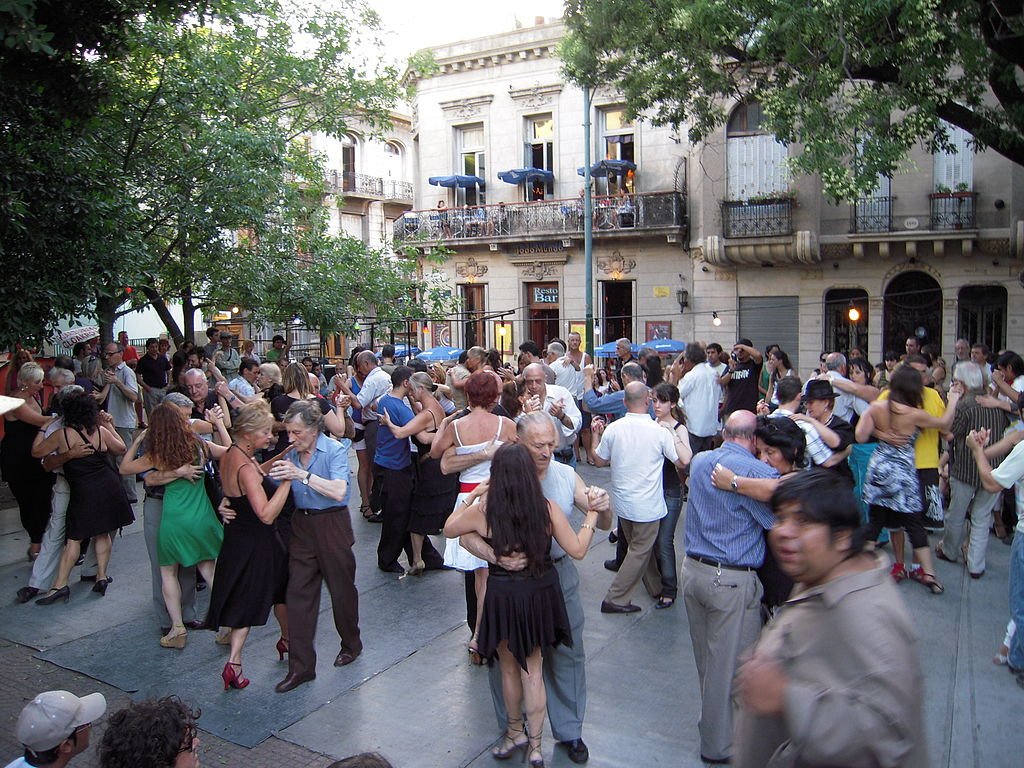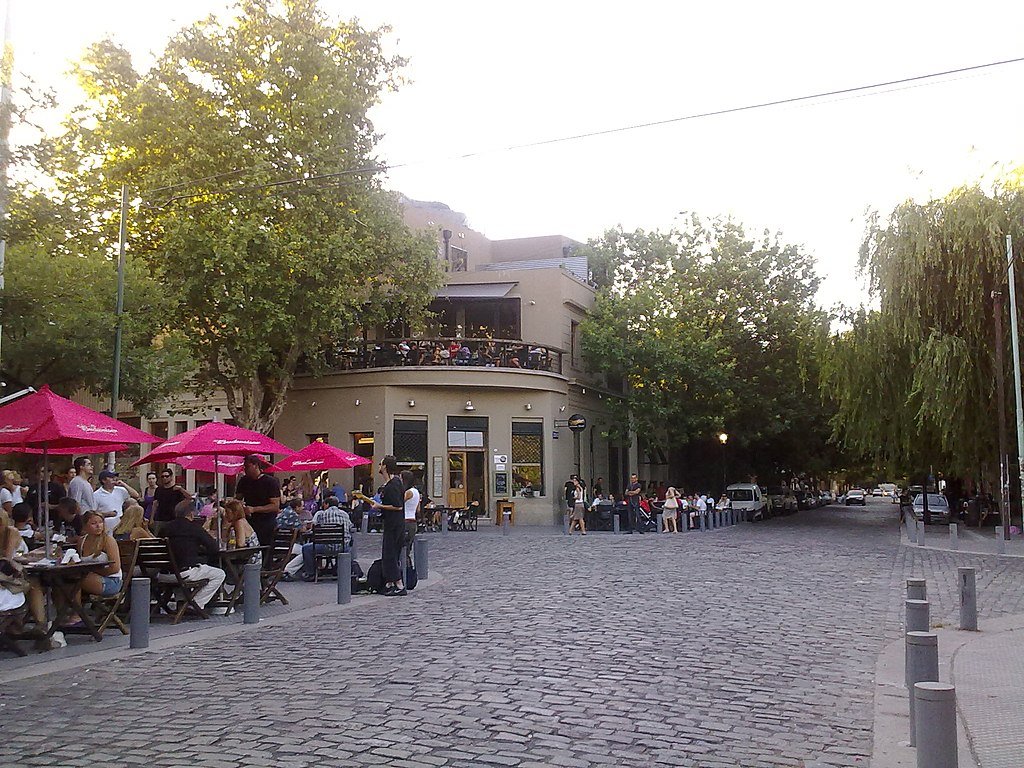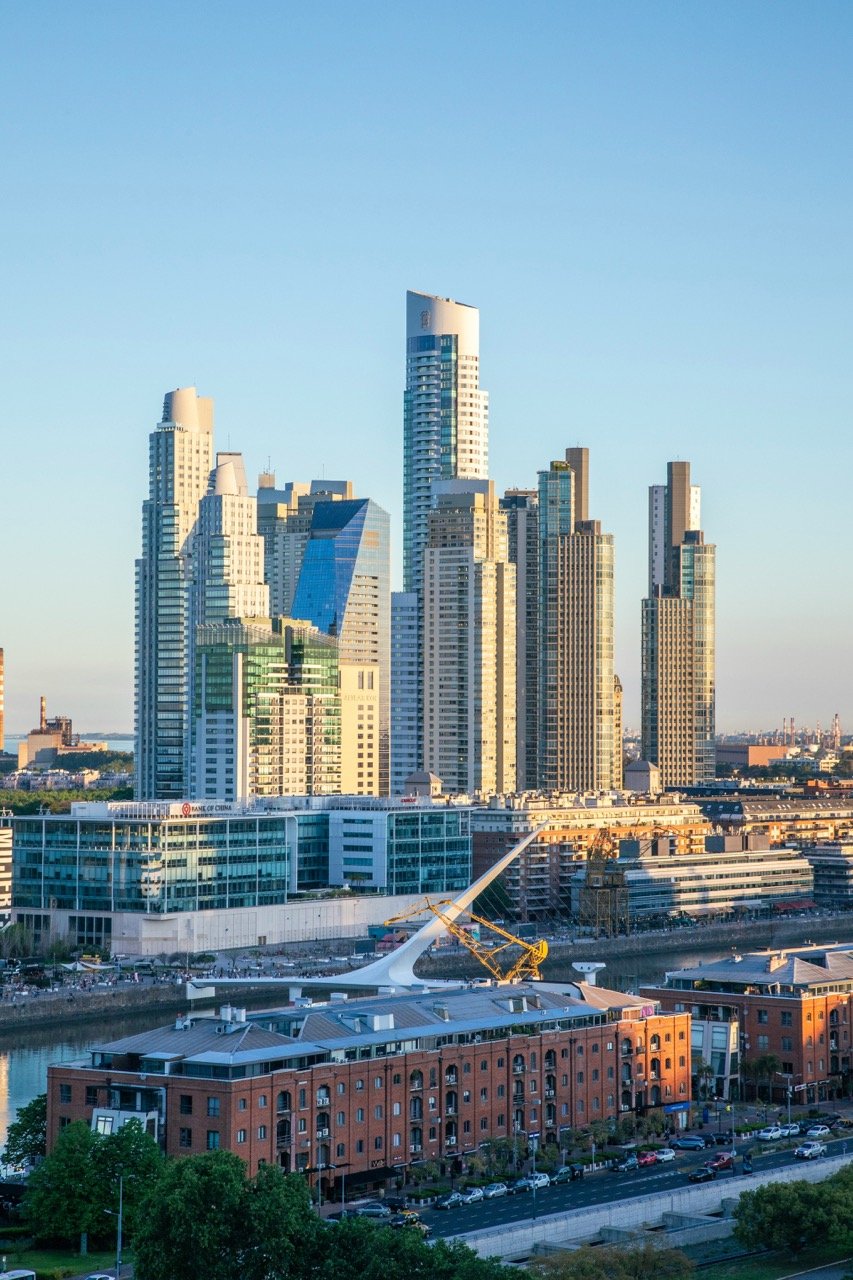Where to Stay in Buenos Aires - A Local's Neighborhood Guide
Buenos Aires, my home city, is a place that seduces travelers from all over the world.
Stretching along the banks of the River Plate, this city of 10 million unfolds in a deliciously chaotic way over almost 205 square kilometers. It’s safe to say that Buenos Aires is enormous. And with that in mind, you can imagine that there is not only a lot to see but also many options for where to stay.
This is a cosmopolitan and eclectic city, and no two neighborhoods are alike. This is part of the pleasure of visiting here - there’s always somewhere different to explore!
It also means that if you want to get a good feel for the city, you really need to see many different neighborhoods. For example, the vibe in classy and upscale Recoleta feels nothing like bohemian San Telmo. Trendy Palermo Soho is practically a world away from off-the-beaten-path (but up and coming) Chacarita.
So choosing the right base for your stay is a really important part of your planning. And that's what I'm here to help you do!
Read on for my guide to choosing the right neighborhood of BA!
Table of Contents
Affiliate disclosure: some of the links in this article are affiliate links. If you book using one of them, we’ll earn a small commission. All of our info is free to read and free of ads, so we appreciate it!
Buenos Aires planning cheatsheet
 Plan your itinerary with expert advice
Plan your itinerary with expert advice
- Book an Argentina travel consultation with a local expert
 My favorite hotels in Buenos Aires
My favorite hotels in Buenos Aires
- Intersur Recoleta - lovely 4-star option in leafy Recoleta. $200/night
- Magnolia Hotel - upscale, but bohemian in the heart of Palermo Soho. $200/night
- SuMa Recoleta - Modern and ideally located in Recoleta. $100/night
- Modern Apartments - 1-3 bedroom apartments in Puerto Madero. $100+/night
- L'Adresse Hôtel Boutique - funky, boutique hotel in San Telmo. $70/night
 Guided tours and activities
Guided tours and activities
 How to get around
How to get around
- Car rentals with DiscoverCars
- Metro and bus at Subte
- Taxis & rideshares with Uber, Cabify, and Didi
- Long distance buses through Omnilineas and BusBud


Summary of my 5 recommended neighborhoods
Photo: Ypsilon from Finland, CC0, via Wikimedia Commons
If you’re feeling overwhelmed with how to choose the right area, relajate (relax) and don’t panic. I’m here to help you decide on the perfect areas for you!
Below, I’ve chosen the 5 neighborhoods that I think make sense for the vast majority of visitors. Any of them will be a fine choice, but they are quite different from each other so will be ideal (or not ideal) for different types of travelers.
For every neighborhood I recommend, I’ve also included a small list of hotels I like, at all different price points.
And while you’ll find a detailed overview of each neighborhood further into the article, below I've put together a quick summary in case you just want the "cliff notes".
A ver! Let’s see!
1. Recoleta
This central neighborhood, sandwiched between downtown and Palermo, is Buenos Aires’ most elegant district. It’s filled with leafy squares, beautiful architecture, an abundance of cafes and restaurants, great shopping, and high end residential buildings. It’s extremely central for sightseeing and extremely pleasant. It's my top recommendation for most travelers, especially anyone visiting for the first time.
2. San Telmo
Bohemian San Telmo is south of downtown and just north of La Boca. It’s the city’s most bohemian neighborhood and one that I love. It is an area in constant change, full of artists, musicians, workers, and now, even lots of wealthier residents. Bookshops, antique stores, cafes, parillas, trendy independent shops, and tango dancers are on every corner and street. It’s great.
3. Palermo
Palermo is by far the largest neighborhood that I've recommended (the largest in the city actually) and it's really best broken down into various "sub-districts", each of which has their own distinct atmosphere. Located to the south of Recoleta and downtown, it's a bit far from the main sights, but is a verdant area with cobblestone streets, great parks, trendy bars, boutique shops, and excellent restaurants. It's residential, but still very busy and a great choice for travelers in town for more than just a few days who want to stay somewhere hip and happening.
4. Puerto Madero
Skyscrapers of glass and steel, brick warehouses repurposed into expensive lofts, high-end restaurants, and everything modern, modern, modern. This is the vibe in Puerto Madero, now Buenos Aires’ most expensive neighborhood. Directly across from downtown and separated from it by a sort of canal, it’s a convenient base for sightseeing and it’s full of new and comfortable hotels. It's not my favorite neighborhood, but it has its appeal.
5. Microcentro (Downtown)
In between Recoleta and San Telmo, Microcentro is the city’s downtown and one of our two business districts (the other being far from the center in the neighborhood of Belgrano). It's busy throughout the day and convenient from a sightseeing standpoint, but becomes a bit of a ghost town in the evenings. Although not a particularly atmospheric place to stay, the vast majority of Buenos Aires’ “must see” sights are here so it remains a convenient choice, especially for visitors with limited time in town.
1. Recoleta
Best for: Anyone over the age of 30; families with kids; older travelers looking for somewhere peaceful; anyone who wants to be close to downtown but in a real neighborhood
Pros: Gorgeous architecture, slightly upscale residential feel, good dining, close proximity to the city’s main tourist sights, pleasant atmosphere
Cons: Expensive, not great public transport
Avenida Callao, Recoleta's main thoroughfare. Photo: Roberto Fiadone, CC BY-SA 3.0, via Wikimedia Commons
The Alvear Palace Hotel. Photo: Just a Man, CC BY 4.0, via Wikimedia Commons. Cropped
Parisian-style architecture along Av. Alvear. Photo: Jorge Láscar from Australia, CC BY 2.0, via Wikimedia Commons
Separated from downtown by the neighborhood of Retiro, Recoleta is the most Parisian neighborhood of BA and it combines great architecture with green squares, tree-lined streets, cultural centers and art museums, great food markets, emblematic cafes, elegant restaurants, and many of the best hotels in town.
Although best known for the famous cemetery that bears its name, Recoleta has lots more to offer. First of all, it's gorgeous. The architecture is lovely, there are pretty little squares everywhere, and it's packed with charming cafes, bistros, restaurants, and little bars that invite you to stop. If you're looking to do some shopping, this is a great spot to browse for high-quality clothes, leather, shoes, and jewelry, mostly made by great local designers (and at very good prices).
It often gets labelled as pretentious, but it's really not. It's certainly wealthy and residential, but it's also casual and relaxed. Sure, it's not bohemian or full of youthful energy, but it's a perfectly normal neighborhood. For families traveling with kids, it's very family-friendly too.
It is also exceedingly well located for sightseeing and getting around the city. Most of the neighborhood is just 15 minutes walking from downtown (microcentro), 10-15 minutes by taxi to San Telmo, a few minutes to the main art museums (Fine Arts or Malba), and right next to the trendy neighborhood of Palermo. Realistically, as long as you enjoy a good stroll, you'll be able to walk to most places you're likely to want to visit.
Something to keep in mind, however, is that there are limited subte stops (subte is our metro/subway) stops in the neighborhood, so if you plan to use the metro, make sure you choose a hotel close to the Las Heras stop.
One of the best things about Recoleta is that, although close to all the action, it's distinctly residential and quite peaceful. It makes a great base from which to explore the rest of the city without having it all blaring on your doorstep. It's a place that's wonderful to just be in and you are certain to enjoy starting and ending your days here. You may even find it hard to leave!
Now, it's probably not the best option for travelers in their 20s, who may find it a bit boring. This is an area for upper middle class Porteños so you won’t find much nightlife or vibrant (chaotic) street life. It’s also more expensive than many other neighborhoods.
Youngsters aside, for anyone 30 and up, Recoleta is always a delight! The restaurants are great, the cafes are perfect for sitting and watching the world go by, leafy plazas dot every street, and the people watching is excellent. And architecture fans will love just strolling around, especially along Avenida Alvear, and admiring the stunning buildings.
And it is not that there is NO nightlife - it's just that they tend to be relaxed more relaxed options, like wine bars and cafes.
In terms of accommodation, there are loads of excellent hotels to choose from, so I’ve chosen several of my favorites below. Some of them are even quite affordable!
Even if you don’t stay here, do make sure to still visit. If you'd like to explore hidden corners with a guide, I offer walking and cycling tours that cover Recoleta and nearby Palermo.
Where to stay
Mio Hotel: A luxurious boutique hotel for wine lovers. The owners are winemakers from Mendoza who offer their guests the most exclusive and best wines of their region for tasting. A special treasure is the 6 meter high entrance door, made with barrels of wine from the family. You also get gourmet food and breakfast.
Hub Porteño: This is a concept boutique hotel; a French-style house remodeled to bring back the splendor of the Buenos Aires Belle Époque. Inside, there is one of the best Nikkei food restaurants in town, Lima.
Algodon Mansion: Top-quality boutique hotel. Ideal for hedonists and those who are keen on design and comfort. There are personal butlers for each guest and daily complimentary selection of drinks, cheeses and sausages, dried fruits, sandwiches, and pastries.
Intersur Recoleta: A good alternative to stay in a splendid neighborhood at an affordable cost. The spacious rooms combine classic French style with contemporary design.
Casa Bevant: Small and cozy hotel with spacious, modern, and cute rooms. Well located and with a very good quality-price ratio. The receptionists are always super friendly and willing to help. $80-100 USD per night.
Loi Suites Recoleta: One of the first boutique hotels in the area with an internal garden of about 400 square meters and a large heated pool. Just a few steps from the Recoleta cemetery and Recoleta Mall.
See more Recoleta hotel options here


2. San Telmo
Best for: Travelers who enjoy a bit of bohemia; anyone who wants to experience “old school Buenos Aires”
Pros: Close to downtown and the main sights, very cool architecture, distinct atmosphere, good dining, lots of art & culture
Cons: Can be very crowded in the day time, some parts feel a bit more "gritty” (although it's all totally safe)
Open air Tango on a Sunday in Plaza Dorrego. Photo: Helge Høifødt, CC BY-SA 3.0, via Wikimedia Commons. Cropped
Calle Defensa at night. Photo: Gobierno de la Ciudad Autónoma de Buenos Aires, CC BY 2.5 AR, via Wikimedia Commons. Cropped
Calle Bolivar. Photo: amanderson2, CC BY 2.0, via Wikimedia Commons
This is one of my dearest neighborhoods and it is the city’s oldest, dating back to the 17th century. Immediately to the south of downtown, just west of Puerto Madero, and only a few minutes away from La Boca, it's also extremely convenient from a logistics standpoint.
San Telmo has changed tremendously over the centuries and continues to do so today. At the end of 19th century, due to a terrible yellow fever disease, the previously rich population of the area moved north to places like Recoleta and Palermo. Their empty mansions and ostentatious houses were occupied by immigrants from the edges of the city who crowded together into them. The area quickly changed from rich to working class, and remained so for a century.
In the last 40 years, gentrification has arrived and the area has turned into a bohemian and vibrant area full of history, art, and treasures on every corner. The city government is also investing money to restore and clean up historic buildings, leading to many interesting discoveries.
Temporary art galleries, late-night bars, and street murals give San Telmo a unique vibe. The wonderful Calle Defensa street, lined with antiques dealers and old-school parillas, runs all the way up to Plaza Dorrego, a wonderful square that is home to a famous Sunday flea market and a favorite amongst street performers.
In Lezama Park, trails wind around tall jacaranda trees and all around the Italian National Historical Museum.
The streets are cobblestone and the architecture is a wonderful mishmash of styles. People are always out and about and there is a distinctly “old world” air all around you. Secret buildings hide underground tunnels, unexpectedly gorgeous interiors, and all manner of wonderful little finds. It's just totally unique.
The area is peaceful during the week and crowded on weekends. If you like bohemia, or antiques, or tango, or, old bars next to modern and cool ones (I could go on and on…), this neighborhood has to be your choice!
I personally love this neighborhood, and regularly visit it on my own and with travelers as part of my Buenos Aires City Tour (which also includes La Boca and Recoleta).
Where to stay
L’Adresse Hotel Boutique: Housed in a 19th-century Art Nouveau building, this hotel is ideal for young travellers that like bohemia but don’t want to give up comfort. Couples with children should pay attention - the hotel offers babysitting!
Anselmo Buenos Aires: A higher standard modern-contemporary option just in front of Plaza Dorrego and a two-minute walk from the San Telmo Market and the Modern Art Museum. Great location!
Merit San Telmo: This is a three-star hotel housed in a 1940s building with Art Nouveau details. Low price and great location. It’s surrounded by bars and restaurants and just few minutes walk from the metro station, Plaza de Mayo, and San Telmo Flea Market.
See more San Telmo options here
3. Palermo
Best for: Travelers in their 20s to 40s; night owls; people staying for more than a day or two
Pros: Trendy, leafy and pleasant, great dining, excellent nightlife, good access to parks
Cons: Far from the main sights, can get loud at night in some parts
The intersection of Calle Armenia and Calle Costa Rica in Palermo Soho. Photo: Roberto Fiadone, CC BY-SA 3.0, via Wikimedia Commons
A section of Tres de Febrero park. Photo: Dan DeLuca, CC BY 2.0, via Wikimedia Commons. Cropped
Calle Honduras. Photo: Gervacio Rosales, CC BY 3.0, via Wikimedia Commons
The intersection of Calle Gurruchaga and Calle Santa Rosa. Photo: Gobierno de la Ciudad Autónoma de Buenos Aires, CC BY 2.5 AR, via Wikimedia Commons
As I mentioned before, Palermo is the largest neighborhood in the city and also one of the most desirable places to live in, visit, and stay.
It's very walkable, with wide tree-lined streets, huge parks, lots of pretty square, and endless options for shopping, dining, and drinking. In the day time it's great for wandering around, relaxing, shopping, and people watching. In the evenings, the dining scene is fantastic and, once night falls, the nightlife is legendary.
The area is huge, so we divide it into many “sub-neighborhoods” with nicknames according to their different feel: Palermo Soho, Palermo Holywood, Bosques de Palermo/Barrio Parque, Palermo Chico, Palermo Botánico, Las Cañitas, and even Palermo Freud! Side note - did you know that Argentina is said to have the highest ratio of psychologists to inhabitants in the world? Many of them have their consulting rooms in this part of Palermo, hence the nickname!
For our purposes, I’ve selected the three sub-districts that I think are of primary interest to tourists: Palermo Soho, Palermo Hollywood, and Bosques de Palermo/Palermo Chico. I've described each of them below so that you can get a sense for how they differ and think about which you might like best.
In terms of sightseeing, Palermo is a bit far from downtown, San Telmo, and La Boca, so if you stay here, you'll need to be ok with using the metro or taxis/uber to head into the city center. It's a good base for people who are spending more than 3 days in town and want to stay in a cool neighborhood that's good to hang out in, but if you're here on a short visit and planning on doing a lot of traditional sightseeing, the location is a bit inconvenient.
Also, do be aware that although you'll often hear Palermo described as bohemian, it really isn't anymore. Like with many cool and artistic areas in cities all over the globe, Palermo's "success” has meant that the neighborhood has changed dramatically from 10 or 20 years ago.
The artists definitely can't afford it anymore, the funky shops have been replaced by designer boutiques, and there are more natural wine bars than bootstrapping breweries. It's pretty upscale now, although it still wants to feel bohemian. Don't get me wrong, it's really nice, but it certainly has not been immune to gentrification.
Below is a map to help you differentiate between the different areas:
Palermo Chico/Bosques de Palermo/Barrio Parque (red on the map)
Locals would be outraged that I've combined these three micro-neighborhoods into one, but it just makes sense to do so. They're all adjacent to each other and the atmosphere is pretty similar in each (i.e. they're all very exclusive and rich!).
Located in between Recoleta and the Parque Tres de Febrero park (which is commonly called "Bosques de Palermo”) this is one of the most distinguished areas of the city. Surrounded by Buenos Aires’ nicest parks - the Japanese Gardens, Rose-garden, Botanical Gardens, etc., it's home to foreign embassies, actors, local television personalities, and celebrity athletes.
The architecture here is really lovely; characterized by grand mansions and Tudor-style homes complete with private gardens. Wandering around here is an absolute pleasure. You have good restaurants and bars, though they are almost entirely upscale and it's a much quieter and more residential vibe than in Palermo Soho or Hollywood.
It’s the ideal spot if you want to be near the action in Palermo Soho and Hollywood, but not in the middle of it.
Palermo Soho (purple on the map)
Running from Av. Scalabrini Ortiz to Avenida Juan B. Justo and centered around Plaza Serrano (a square lined with restaurants and bars), this is Buenos Aires’ “see and be seen” neighborhood.
In the eighties this area was the cradle of Argentine Rock and Roll so despite the big changes produced during the last 30 years, when walking the area you can still feel the spirit of the eighties.
The area is chalk full of trendy stores, local designers, amazing restaurants, hip bars, and famous nightclubs. The streets are cobblestone and lined with trees, people are always hanging out in the squares, and alleyways are covered in street art. It's also where you're most likely to run into people posing for Instagram photos as well as photography crews snapping pics of models for marketing campaigns.
It's very much an area that will appeal to young and fashionable people who like all things trendy. Although very fun to visit, it’s not normally somewhere I recommend as a base to those over 30.
Palermo Hollywood (yellow on the map)
At the southern edge of Palermo Soho, this neighborhood runs from Av. Juan B Justo until Av. Dorrego. The area gets its name from the presence of TV studios and movie production companies in the area.
Here, you get much of the appeal of Palermo Soho, but with fewer crowds and quieter nights. It’s a bit more residential, a bit more relaxed, and slightly less obsessed with being cool. I think it's more pleasant, but I am neither young nor trendy!
It's a favorite place for locals from all over the city to come for a good meal as it has a huge variety of restaurants ranging from street food to elegant sushi bars and sophisticated steakhouses.
And it's also got excellent nightlife with craft beer breweries, rooftop bars, speak-easy style cocktail bars, lounges, and even things like ping pong parlors that serve drinks! And despite all the activity, it's still pretty peaceful because most of the action is concentrated on just a couple of streets.
Where to stay
Palermo Chico/Barrio Parque
Casa Sur Bellini: An elegant contemporary hotel just four blocks from the Botanical Garden, 15 minutes walking to Palermo Soho and 1 km away from the Museum of Latin American Art of Buenos Aires (MALBA). The outdoor pool is ideal for hot summer days. The best: free bikes for guests and many route suggestions!
248 Finisterra: This intimate hotel is located in Las Cañitas (a lovely part of Palermo Woods full of cosmopolitan restaurants, bars, and unique bakeries). It has several highlights: a lush garden with sun loungers, a terrace with a hot circular yacuzzi, and a library and lounge with a fireplace to make you feel at home.
Palermo Soho
Legado Mitico: This charming boutique hotel is located in one of the most beautiful streets of Soho. The rooms are decorated and inspired by different mythical characters from Argentine culture: Eva Perón, Che Guevara, and Carlos Gardel among them.
Magnolia: A lovely art nouveau style house with bohemian and fancy decoration. The atmosphere is warm and intimate and there’s a beautiful garden and roof top. The bar serves a great selection of Argentine wines.
Jardín Escondido: This is definitely a hidden paradise - a deluxe hotel combining nature with style and elegance. The three level gardens with a solar heated pool and outdoors parrilla make the difference! A gossip detail: Francis Ford Coppola is one of the regular guests of the establishment.
Sweet Home Hostel: Ideal for middle-low budget travellers. Excellent location, cozy and confortable rooms. (Some have toilette outside, but they are all private). One disadvantage: there is no lift for any of the three floors of the hotel.
Palermo Hollywood
Home Hotel: This adorable and award-winning hotel is an oasis of tranquility in a lovely, but thriving area. It sits on the border between Palermo and the beautiful and unspoiled Chacarita neighborhood. While slightly removed, it is still right next to top restaurants and great bars.
The hotel strikes a perfect balance between contemporary and retro and has the most beautiful green garden with a heated pool in which you’ll want to stay forever!
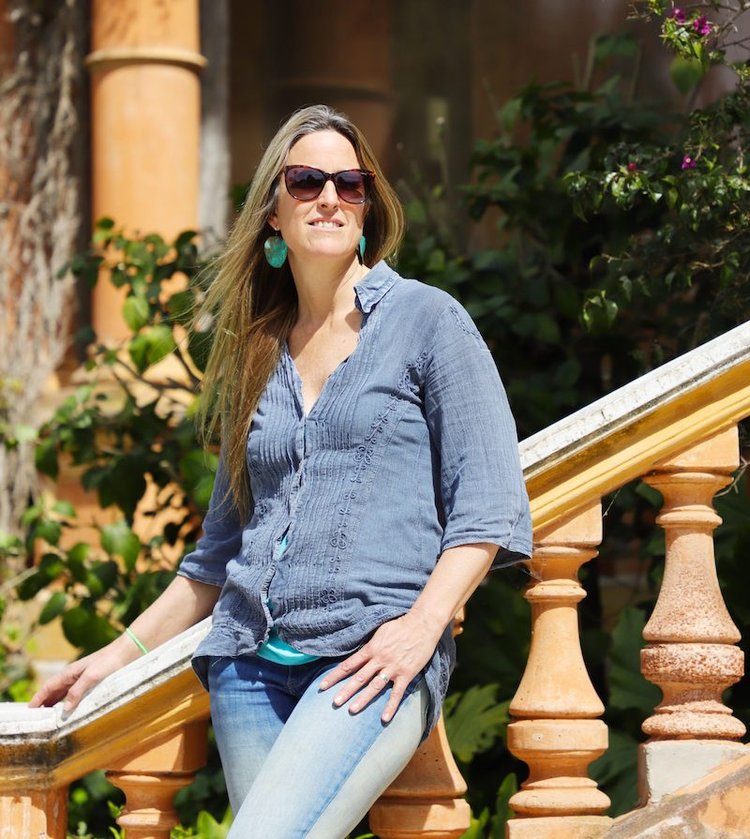

4. Puerto Madero
Best for: Luxury travelers looking for modern, high-end hotels and fine dining
Pros: Modern and well organized neighborhood, good hotels, nice waterfront, great upscale dining, close to downtown
Cons: Expensive, no local flavor, not atmospheric, poor public transport
Puerto Madero seen from downtown. Photo: Andrzej Otrębski, CC BY-SA 4.0, via Wikimedia Commons
Puerto Madero and the Puente de la Mujer
Parque Micaela Bastidas
The waterfront promenade next to the Argentine Yacht Club. Photo: Andrzej Otrębski, CC BY-SA 4.0, via Wikimedia Commons
Puerto Madero is a revamped and modern area of the city immediately to the east of downtown, from which it is separated by a sort of canal. It lies directly on the banks of the river and is surrounded on one side by the enormous Reserva Ecológica Costanera Sur, a protected reserve.
Once an industrial and port area that was mostly made of up of red brick warehouses along the docks, a massive redevelopment plan was started in 1997. Hundreds of millions of dollars have been invested and entirely new streets and avenues were built, artistic monuments and fountains were installed, and huge renovations to existing buildings and parks were undertaken. The whole area feels very modern, very organized, and very unlike anywhere else in Buenos Aires.
Now, with the redevelopment almost totally complete, this is where you'll find the city's glitziest high rises and luxury condominiums. Elegant skyscrapers house multinational corporations and astronomically expensive apartments. On the upper floors of the old docks and warehouses, offices and loft-type apartments were developed while the ground floors mostly house restaurants and shops, most of them quite upscale.
As a result, the neighborhood has become a major center of high-end gastronomy and its chic steakhouses are popular with tourists and business people alike.
One of Buenos Aires’ most famous sites is here too: the Women's Bridge (Puente de la Mujer) designed by the renowned artist and architect Santiago Calatrava.
In terms of hotels, you have lots of mid-range to high-end ones, including some more American-style properties, but no budget options.
Staying in Puerto Madero feels like staying on an island, a kind of “modern city” inside of another city. For me, it feels a bit generic - like any other big city in the world - and is the least “porteño” district. I like visiting the area and always include it on my tours of the downtown and La Boca, but it's not somewhere I personally would stay. Even so, I recognize that it's a nice place and it will be to some people's taste.
Where to stay
Alvear Icon Hotel: A modern 32-story building with magnificent panoramic views of the city and the river. Best part: it has one of the top sky bars on which to enjoy fabulous drinks!
Hotel Faena: Extravagant, trendy, 5-stars. This hotel was digned by Phillip Stark over a remodeled silo in the old port. It has a fantastic pool bar and at night offers the best option for tango shows in tow; Rojo Tango. Shows take place inside a special hall decorated like a cabaret club.
Hotel Madero: Modern and minimalist, a “less expensive” option in this exclusive neighborhood. It has a heated pool, two bars, and a large terrace.
5. Microcentro (Downtown)
Best for: Visitors with limited time who want to stay close to the main sights
Pros: Good value, central location, good public transport connections, most of the main sights are here or nearby, lots of hotel options
Cons: Very commercial atmosphere, gets very quiet in the evenings, not particularly pretty or atmospheric
Avenida 9 de Julio, the city's main avenue
The Plaza de Mayo and Metropolitan Cathedral
A partial view of the Teatro Colon opera house
La Casa Rosada - the Presidential Palace in downtown
When I say downtown I'm referring to what we locals call Microcentro. This encompasses all the area around the financial and commercial district from Plaza San Martin to Plaza de Mayo. You may also see it labelled as "Monserrat” or "San Nicolas” on maps. Retiro, a distinct neighborhood that you're likely to read about, is not technically part of Microcentro, but it's a tiny neighborhood adjacent to it and you can really just include it as part of it.
In terms of its relations to other neighborhoods in the city, know that San Telmo is to the south, Puerto Madero to the east, and Recoleta to the north.
This is a downtown area like many others - it's full of offices, banks, shops, government buildings, lots of restaurants, emblematic cafes (Tortoni and Ideal among them), theaters, bookstores, pizza shops, and all range of hotels.
The area is very busy during the week, but quite empty at weekends. It also clears out in the evenings when office workers go home to more residential neighborhoods.
It is next to all the most important historical spots of the city: the Casa Rosada, Plaza de Mayo, Teatro Colon, San Telmo, The English clock tower, Retiro station, Calle Florida, Avenida 9 de Julio, the Obelisk, our National Congress, and so much more. Here you are also adjacent to Retiro, San Telmo, Recoleta, and Puerto Madero.
Microcentro is extremely convenient for sightseeing, even if it is not the most atmospheric part of the city. Many streets in downtown are also pedestrianized, so walking around is pretty stress free.
If you prioritize being close to the main sights, want to feel the vibe of busy porteño life, and only have a day or two in the city, then I think Microcentro is a good option. For anyone with more time, or who just wants to stay somewhere that feels a bit more "lived in", I'd stick to the previous options.
Where to stay
Casa Calma: This cozy hotel lives up to its name (Calm House); an oasis in the middle of the bustling downtown. It’s location is fabulous!
Esplendor By Wyndham: A wonderfully restored building that combines a neo-Renaissance façade with avant-garde interiors. Excellent value for money. The best thing about it is its wonderful art gallery with works referring to different Argentine personalities. And its strategic location!
Have a look at more Microcentro accommodations here


Other neighborhoods to consider
Below are three other neighborhoods that are less popular with tourists, but still very nice and relatively convenient for sightseeing.
Colegiales
Colegiales is the neighborhood between Palermo Hollywood and Belgrano. It’s not very visited and has no major attractions, but it has charming streets, low buildings, good cafes and restaurants, and is a very pleasant place to stay. It's elegant in its own sleepy way, but not pretentious, and feels a little bit like a secret in the middle of the city. If you've been to Buenos Aires before and like the idea of basing yourself in a residential neighborhood, it's worth considering.
Chacarita
Chacarita is a former working class neighborhood that is quickly developing into somewhere trendy and “in". It is squished between Belgrano, Colegiales, and Palermo Hollywood and has an excellent food scene and a very local feel. As rent in Palermo has become very expensive, people have started moving in Chacarita, quickly changing the atmosphere. If you like things indie and want to stay somewhere “under the radar” (at least for other tourists), then you'll probably like it. To find it on the map, just look for the enormous Chacarita Cemetery.
Villa Crespo
Villa Crespo also borders Palermo Hollywood and is somewhat similar, although quieter, more local, and less trendy. I quite like it, but it has no hotel options, is a bit far from the traditional sights, and isn't as “easy” as staying in Palermo. It's a nice choice if you're a returning visitor who wants to stay close to Palermo, but away from most of the crowds.
More Argentina travel info
For more advice on planning your trip to Argentina, check out our other guides and itineraries!
Buenos Aires
Patagonia
Argentina

Connect with Maria
